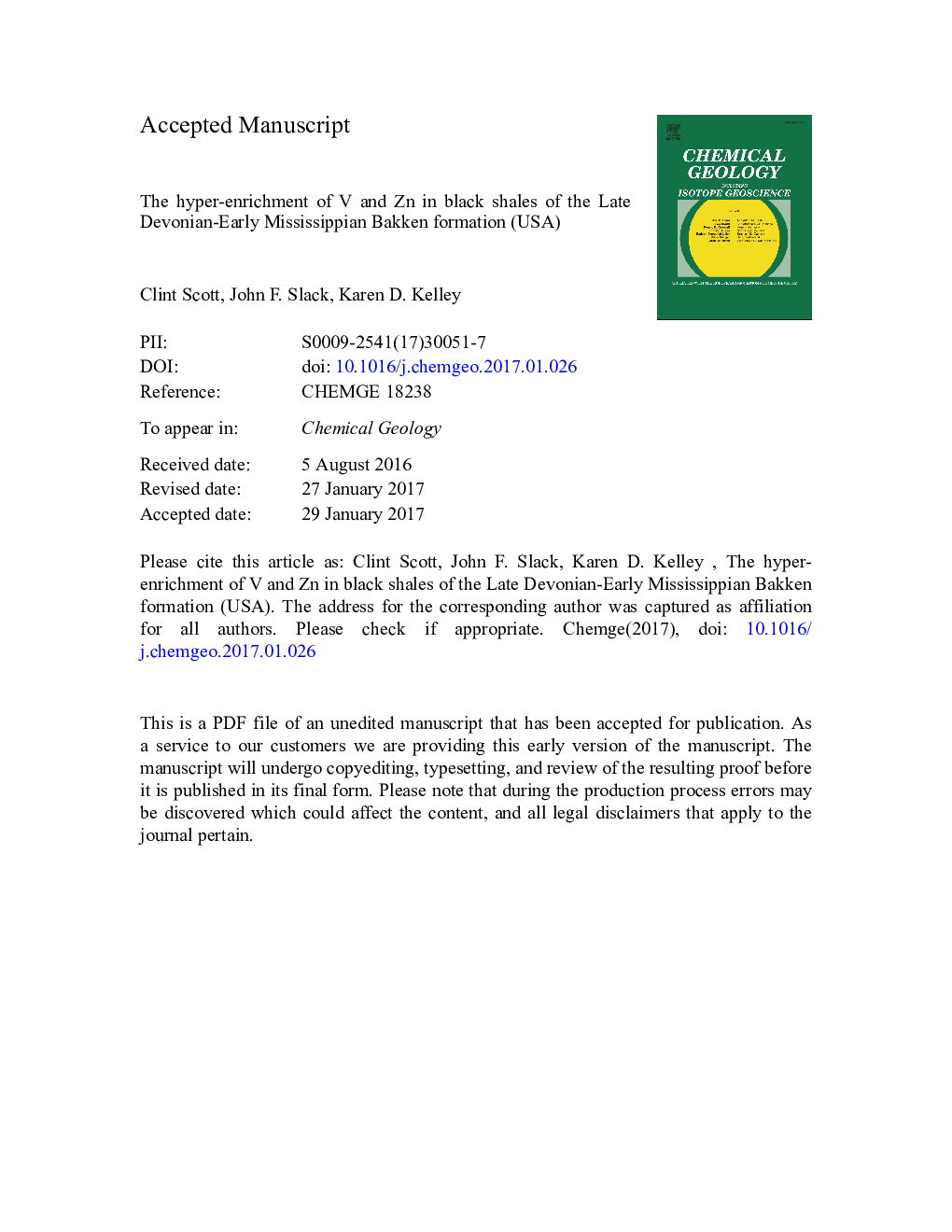| Article ID | Journal | Published Year | Pages | File Type |
|---|---|---|---|---|
| 5782967 | Chemical Geology | 2017 | 56 Pages |
Abstract
Black shales of the Late Devonian to Early Mississippian Bakken Formation are characterized by high concentrations of organic carbon and the hyper-enrichment (>Â 500 to 1000s of mg/kg) of V and Zn. Deposition of black shales resulted from shallow seafloor depths that promoted rapid development of euxinic conditions. Vanadium hyper-enrichments, which are unknown in modern environments, are likely the result of very high levels of dissolved H2S (~Â 10Â mM) in bottom waters or sediments. Because modern hyper-enrichments of Zn are documented only in Framvaren Fjord (Norway), it is likely that the biogeochemical trigger responsible for Zn hyper-enrichment in Framvaren Fjord was also present in the Bakken basin. With Framvaren Fjord as an analogue, we propose a causal link between the activity of phototrophic sulfide oxidizing bacteria, related to the development of photic-zone euxinia, and the hyper-enrichment of Zn in black shales of the Bakken Formation.
Related Topics
Physical Sciences and Engineering
Earth and Planetary Sciences
Geochemistry and Petrology
Authors
Clint Scott, John F. Slack, Karen D. Kelley,
